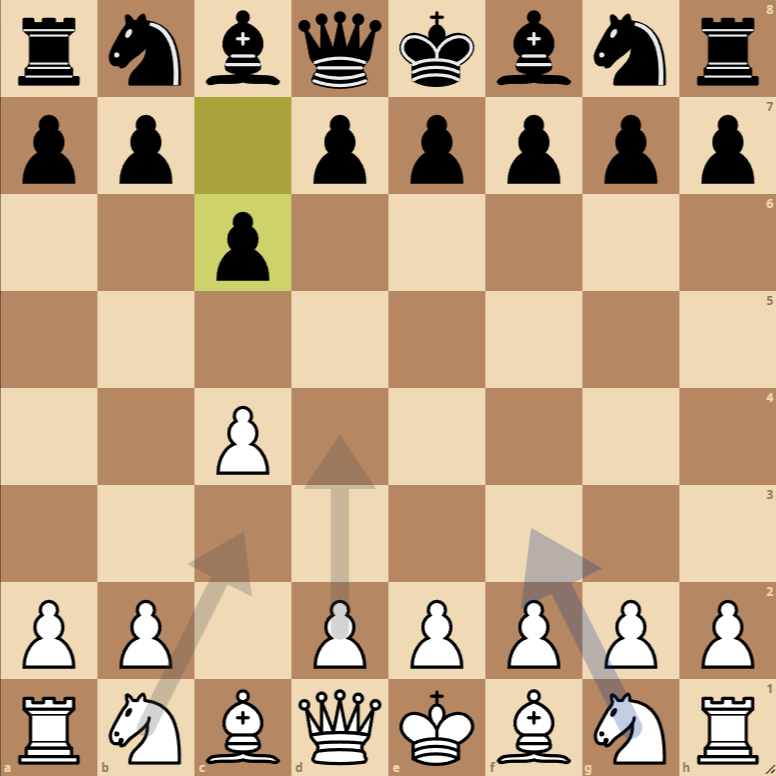How to Play the English Opening: Caro-Kann Defensive System

- 1. c4 c6: This move initiates the English Opening: Caro-Kann Defensive System. Here, White plays c4, aiming to control the center of the board from the queen’s flank, while Black responds with c6, possibly preparing d5 to challenge center control. This system is a blend of the English Opening and the Caro-Kann Defense, known for its solidity and strategic flexibility.
Variations of the English Opening: Caro-Kann Defensive System
1. c4 c6 2. d4 d5
In this variation, both sides aim for firm control of the center. White advances their queen’s pawn to d4, while Black responds with d5, creating a symmetrical pawn center. This structure leads to a balanced game with opportunities for both sides.
1. c4 c6 2. Nf3
White develops their knight to f3, supporting the center and preparing for future pawn advances. This move also allows flexibility in White’s pawn structure and sets the stage for harmonious piece development.
1. c4 c6 2. e4
With 2. e4, White opts for a more aggressive setup, aiming to control the center with pawns on c4 and e4. This move can lead to more dynamic pawn structures and a direct style of play, offering White the opportunity to seize the initiative.
English Opening: Caro-Kann Defensive System
The English Opening starts with 1. c4, a move that controls the center from the flank and prepares the development of the light-squared bishop. This opening is flexible and can transpose into a variety of central systems. The move 1… c6 by Black, known as the Caro-Kann Defensive System in the English Opening, is a solid response that prepares the advance …d5, aiming for symmetrical center control.
Strategies and Tactics for Both Sides
White (English Opening):
- Nf3: Develops a minor piece and controls the center. This move also prepares for castling and can support future advances of d4 or e4. The main strategy is centered around controlling the center and flexible piece development.
- e4: A more direct attempt to control the center. This move can lead to pawn structures similar to the Queen’s Pawn Opening or even the Caro-Kann Defense. White should be prepared to open lines and capitalize on piece centralization.
- d4: Establishes a solid center control and prepares for the development of minor pieces, especially the dark-squared bishop. This move leads to a more classical pawn structure and positional play.
Black (Caro-Kann Defensive System):
- d5: The natural move that challenges the center and opens lines for the development of the dark-squared bishop. This symmetrical advance leads to a balanced struggle for central control.
- Af5 or Ad7: Depending on White’s response, Black can actively develop their dark-squared bishop with Af5 or opt for a more conservative approach with Ad7. These developments aim to maintain a solid pawn structure and flexibility in development.
- e6 or g6: Black can choose a more solid approach with e6, preparing the development of the light-squared bishop and safe castling, or a more dynamic approach with g6, aiming for a King’s Indian pawn structure.
Conclusion
This opening is ideal for players who enjoy positional and strategic play. White has the flexibility to transpose into different systems, while Black seeks a solid and well-founded game. The choice between Nf3, e4, or d4 by White will dictate the nature of the game, whether it’s a more classical or dynamic approach. Black, on the other hand, must respond flexibly, keeping an eye on harmonious piece development and center control.

